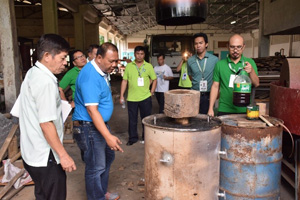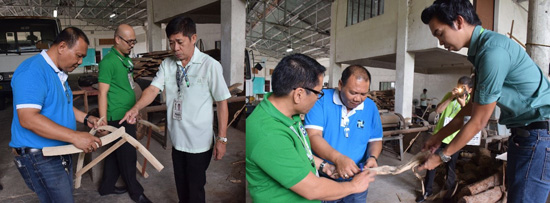 Paper mulberry tree, which has soft and brittle wood, can be made into charcoal, liquor/wood vinegar, hand-made paper, scrunch, and bent wood as highlighted in a project.
Paper mulberry tree, which has soft and brittle wood, can be made into charcoal, liquor/wood vinegar, hand-made paper, scrunch, and bent wood as highlighted in a project.
Titled “Processing and wood quality evaluation of paper mulberry (Broussonetia papyrifera (L.) L’Herit ex Vent) for furniture, handicrafts and other by-products,” the project is funded by the Philippine Council for Agriculture, Aquatic and Natural Resources Research and Development of the Department of Science and Technology (DOST-PCAARRD) and implemented by the DOST-Forest Products Research and Development Institute (DOST-FPRDI).
Paper mulberry, locally known as “lapnis,” can be classified as a large shrub or a small tree with a soft and brittle wood. It was introduced in the Philippines in the early 1930s as a reforestation species and as an alternative source of fiber. However, it can grow fast and spread easily via seed dispersal, primarily through birds and other animals that feed on its fruits.
 Due to its excessive growth and invasive characteristics, the project team conducted the study on the possible products that can be utilized from lapnis to control and manage its further spread and invasiveness.
Due to its excessive growth and invasive characteristics, the project team conducted the study on the possible products that can be utilized from lapnis to control and manage its further spread and invasiveness.
DOST-PCAARRD, represented by Dr. Marcelino U. Siladan, Industry Strategic S&T Program (ISP) Manager for Rubber and ITP, reviewed the project along with Dr. Loreto Novicio, Officer-in-Charge of the Head Planning Unit of FPRDI.
According to FPRDI Project Leader, For. Pabilito Alcachupas, the team, secured with necessary permits, conducted reconnaissance surveys and geo-tagging of paper mulberry trees in various barangays of Los Baños.
 The team also conducted sawmilling trials, wherein resulting data were computed for lumber recovery and grading analysis.
The team also conducted sawmilling trials, wherein resulting data were computed for lumber recovery and grading analysis.
Additional log samples were collected and sawn using the FPRDI bandmill. The log trims, tops, and branches were then converted into charcoal using the FPRDI drum kiln.
After the review, the team showed the raw materials and equipment used in the project implementation, along with the sample products from paper mulberry.
The next phase for the project is the assessment of acceptability factor of the developed paper mulberry products in the local community.
